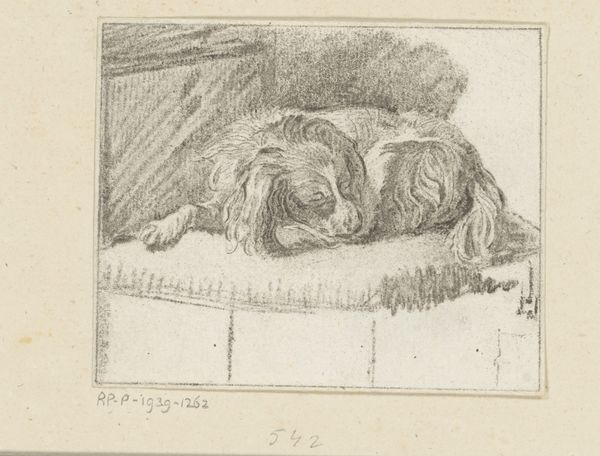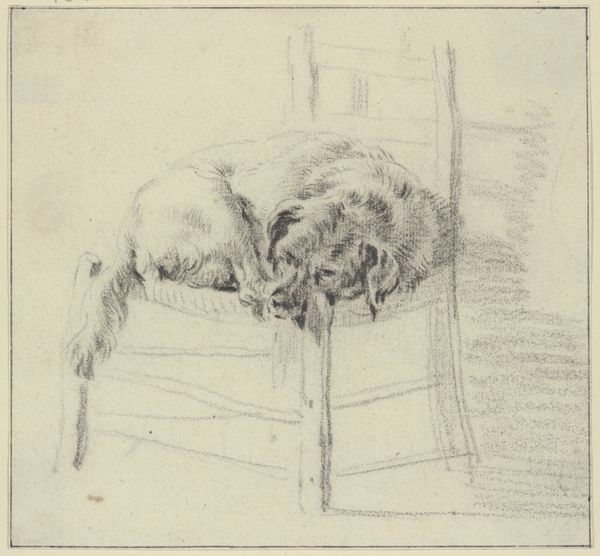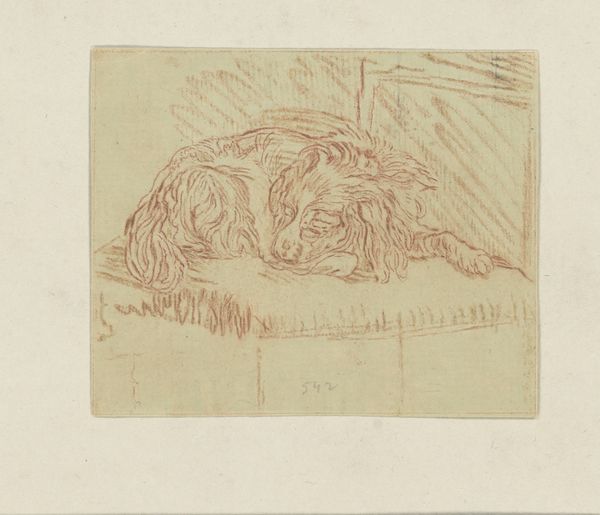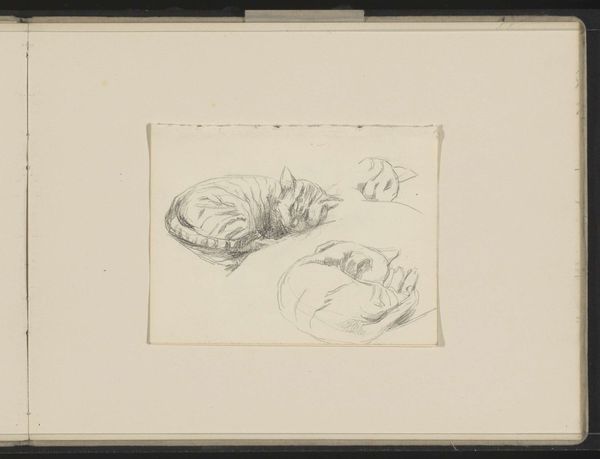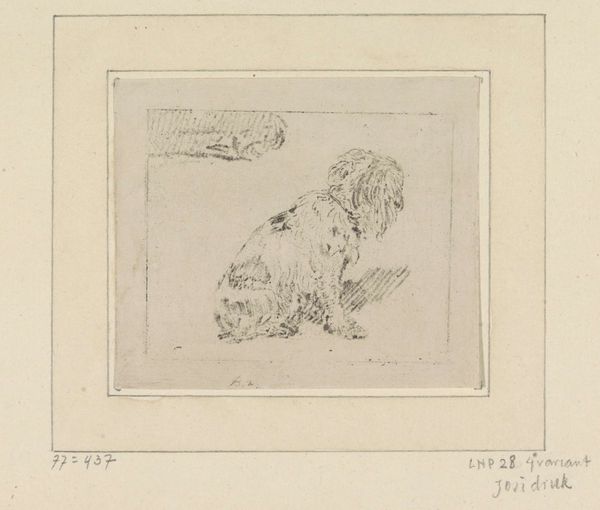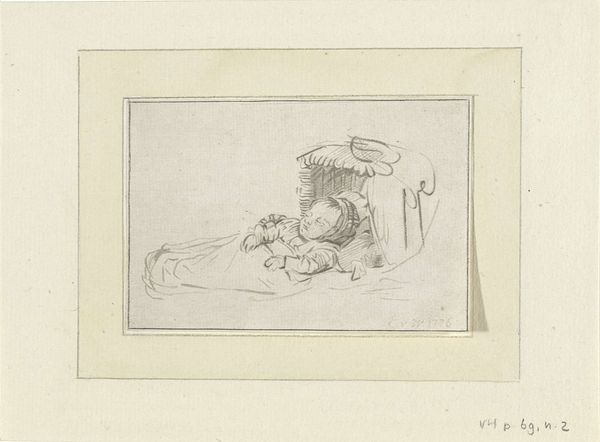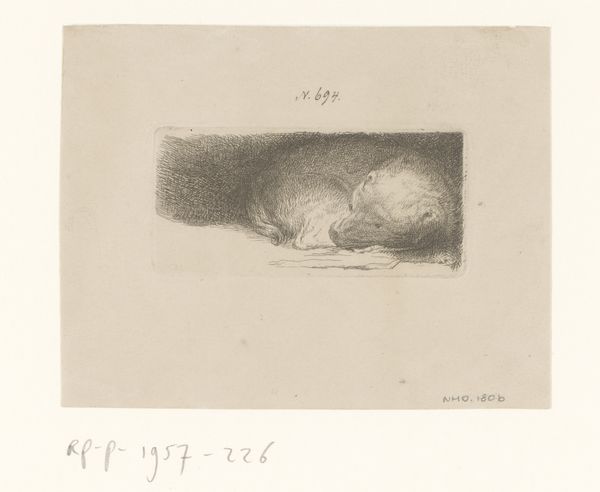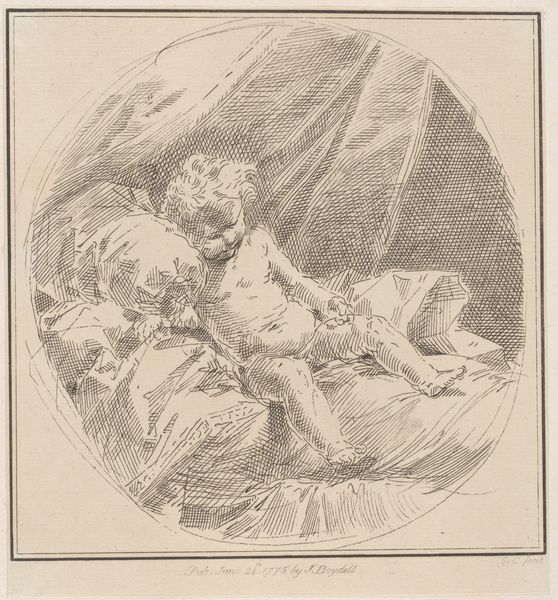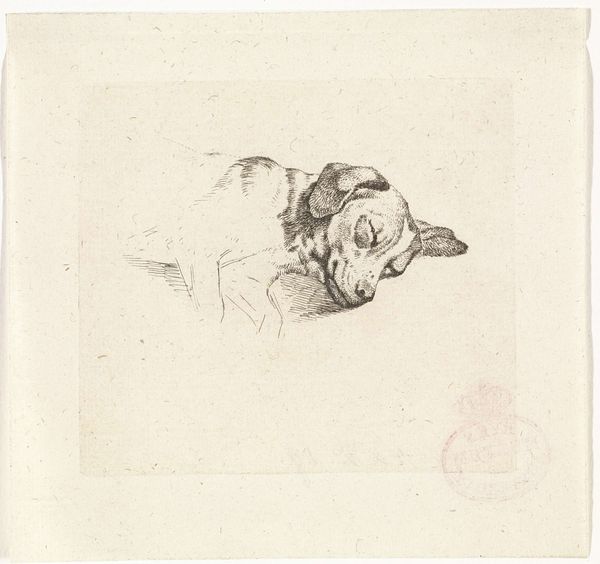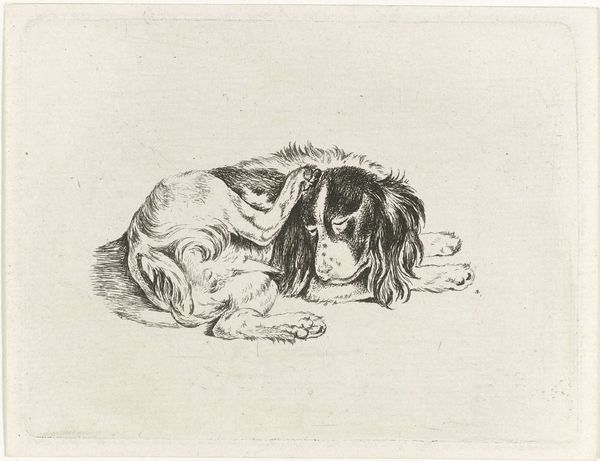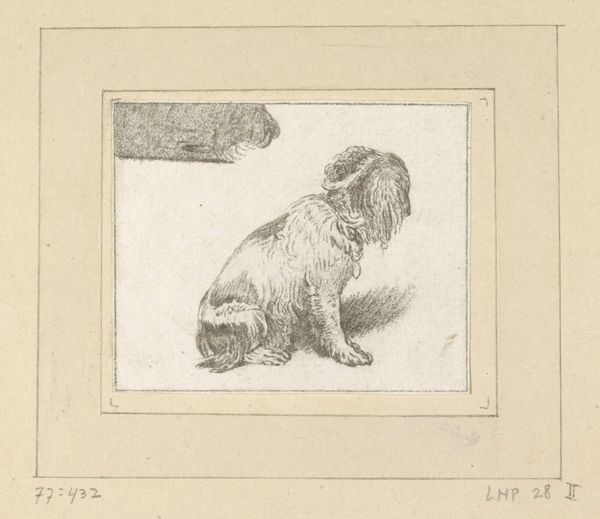
Dimensions: height 75 mm, width 92 mm
Copyright: Rijks Museum: Open Domain
Editor: Here we have Cornelis Brouwer’s "Liggende hond," created in 1777. It’s a pencil drawing on paper, and honestly, the first thing that strikes me is its intimacy. It feels like a secret glimpse into the artist's personal sketchbook. What do you see in it? Curator: Intimacy, yes! It whispers rather than shouts, doesn't it? For me, it's the vulnerability. The dog is utterly relaxed, asleep. Brouwer has captured a fleeting moment of peace. But look closer—it’s more than just a study of a dog. Consider the period— late 18th century, pre-French Revolution, when "sensibility" was all the rage. Do you see how the simple act of observing, of recording, elevates the everyday? He treats the mundane with reverence. Does the pup look posed, would you say? Editor: Not at all! It feels completely natural. Like he just happened to notice the dog dozing off. But "sensibility?" Could you expand on that? Curator: Absolutely. Think of "sensibility" as a cultural obsession with feeling and emotion. Artists and writers wanted to explore the nuances of human, and animal, experience. What is most honest, most pure. This simple drawing then is very much a product of its time, wouldn't you agree? Brouwer elevates what is readily around him, at hand and accessible to others. Perhaps prompting its audience to also consider those beings that we hold near. Editor: That makes so much sense. So, it’s not just a cute dog picture. Curator: Precisely. Brouwer used simple observation to get at something much deeper: that the beauty in the world is available in every instant! And the feelings aroused are significant. Editor: Wow, I definitely see it differently now. It’s a little reminder to appreciate the simple things and consider those around us! Curator: A charming sentiment, and it underscores the quiet power of the sketch! A humble yet impactful little piece of art.
Comments
No comments
Be the first to comment and join the conversation on the ultimate creative platform.
